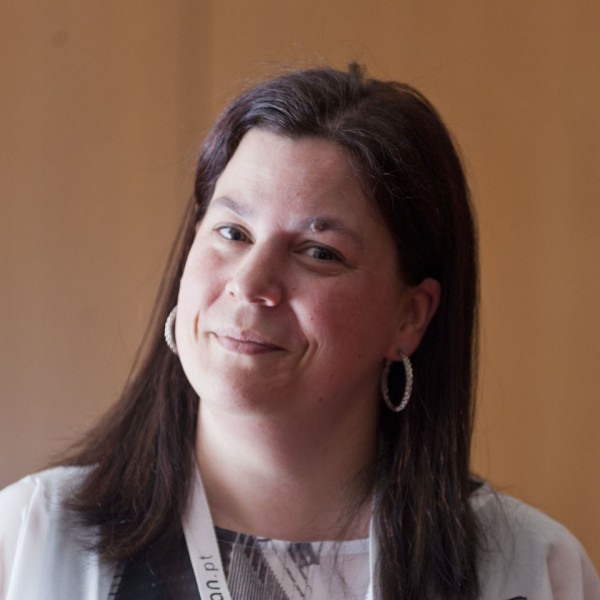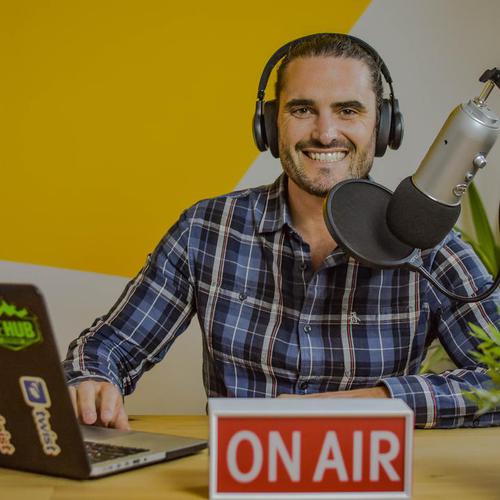
Welcome back to WorkMinus, where we talk about what we need to drop from how we work today, and quick pivots you can make the closer to a better future of work. Today our guest is Tracy Wymer. He’s the VP of Workplace at Knoll, and this episode is Work Minus Office Buildings. Hi Tracy, how are you today?
I’m well Neil, how are you doing?
I’m doing excellent. Why don’t you start off telling us just a little bit about Knoll, and specifically what you do as the VP of Workplace there?
Fantastic. Knoll is a commercial furniture manufacturer with its roots in excellent design. Our founder, Florence Knoll, coined a term and used it for many years: good design is good business. And we’ve stood by that value for many, many decades. We are turning 80 years old and we look at our goal as stewards to the brand. We always like to keep elevating the design conversation and keep our solutions relevant to the modern workplace today.
It’s really interesting – if you go to the Knoll website, you’re obviously going to see a lot about design and furniture, but it’s a lot about the workplace and how things are changing. Recently you guys released a new report, which you do quite often, but this one is on something called immersive planning – so why don’t you introduce us to that term and what it means.
I will. One of the things – and before we jump into immersive planning – research has always formed the foundation of what we do, specifically from a product development standpoint, or how we go to market with certain items. We like to keep relevant and in-the-know as far as what we feel macro-patterns are that may be influencing workplace planning today. One of these that we recently introduced was this notion of immersive planning. And I think sometimes we have to look at these things in the broader spectrum. If we look at, for example, perimeter planning, which is the planning of private offices around the perimeter of a building. More of the workstations are at the center or the core of the building – that is still viable today. There are many professional firms that still do that today. There’s been an evolution though from perimeter planning to something that’s more core planning, which is taking those offices off the perimeter and putting them at the core of the building, opening up the work environment to natural light. There’s also a planning approach that refers to efficiency, which is when the organization is really trying to have the real estate be as efficient as possible. And there’s also a planning approach referred to as adaptive. There are specific spaces designed for specific functions, and people go to those specific places for those kinds of engagements, for that type of function.
Immersive planning is a little bit different because it’s making a shift to a more people-centric approach to planning, versus focusing on the real estate. So what immersive planning really embodies is this notion of curating different experiences. And those experiences really then become defined by the occupants of the space. So it’s taking somewhat of a lighter touch, but making sure that there’s familiar forms, familiar environments, and a variety of these environments that people can migrate to depending on what the nature of their work is. If that work does change over the course of a day, a week, a project, or where they may be in the process of creating the next great tool for their organization.
In your report you make a distinction between looking at the difference between looking at the office as a building and the workplace as a complete experience, which is a lot of what you’re talking about here. Another thing you talk about in the report is this difference between – you said: the workplace is less of an industrial center and more of a ‘town square’ now. Can you elaborate more on what you mean by that?
Yes. Once again, it always helps to take a broader look at these items. And if you look historically, the office was a manifestation of what came out of industrial centers. The efficiencies that were put into such things as assembly line production, that type of thing. Those efficiencies were somewhat baked into some early office planning. As we look at it today, the offices that we are left with are cogs in that machine and it is more of a social center. It’s a gathering place. It’s a place for people to come together and share values. It’s a place where their ideas are expressed. One of the things we hold up is the “agora,” if you will, which is this melding of culture and politics and philosophy. And how can that almost be a metaphor for some of these examples that we see today in contemporary office planning.
You talked about this before, but do you feel like the very nature of our work – maybe in the last 10 to 20 years – has changed so much that it demands a fresh look at workplaces? Or has office design just been slow to adapt to how work has always been?
I think there’s a little bit of both in that statement, Neil. I would say that office design – because it’s linked to physical real estate – it has been relatively slow to evolve sometimes. However, you look at the work that has changed and where it’s become more pronounced is the fact that obviously technology has influenced it dramatically. And when I say technology, it’s the technology that really empowers individuals to be connected. To be connected not only to various networks that they need to connect to, but also to be connected to the social networks that they need to be connected to, to really be productive in today’s work environment. So that whole notion of work as a social gathering point, I think is very much alive today. I think it’s very much a raison d’être. How people think about a workplace to bring people into it. One of the words that we hear repeatedly these days is, how do we create the ‘vibe’ of our work environment to really stimulate some ideas and to really inspire people to do their best work.
You brought up the term ‘productivity,’ which is a very important term when people talk about work, and about how they interact with each other. I want to dig in a little bit deeper about this. When we’re talking about immersive planning, we’re talking about people, like you said, curating experiences, they’re interacting with each other a lot. How do you feel that affects people’s productivity? Because a lot of times when we think of productivity, we think of: and I able to focus, on my own, to get my work done? Do we need to expand what we mean by productivity? Or how do we change our office mindset for that?
I think we do. For many instances, it’s a very difficult metric today. Not every organization manufactures widgets that we can simply count at the end of the day. From day 1 to day 2, have we increased the output of widgets? So that becomes, like I mentioned, a difficult metric. I think I also want to caution that when we talk about something like immersive planning, it’s not simply about the café, or the hospitality experience – that’s a component of it. This is really about curating the broad spectrum of experiences. So the notion of the social center, or that social core, is there. But also, the intimacy of a space that someone may feel is very much secure and very much capable of engaging in the heads-down focus work, that is available to them as well. So, I think sometimes we get into the discussions of one-size-fits-all, and this is really – if you can say anything about office planning – we’re way beyond one-size-fits-all. And it truly is a variety of space to serve a variety of needs.
When you talk about immersive planning, one thing that I’ve seen is that you compare it’s to being influenced by some startup culture, but also interestingly, hospitality culture, with hotels. Can you talk more about how that has really influenced office design lately?
Absolutely. As we look at not only hospitality, but also the residential influence that is coming into the workplace. Some of that was the early manifestation that was embraced by the startups. It’s interesting, I’m based in San Francisco, and I always said that what we’re competing the most against, or with, are all the cafes on Valencia Street – and the fact that many of the startups begin there. And they have that environment. They have that almost mnemonic component of what occurs in that environment. And once they become a founder, they’re trying to replicate that in their state. So this notion of hospitality and residential may have come from cafés. If we trace the roots of our insurance industry back to the beer halls of England, you can maybe make a comparison to that as well.
Yeah.
So we look at hospitality as very much an influence of that. We look at the residential as an influence of that. However, I think we’re also at this crossroads. And what’s been so interesting in residential design is that they’re getting cues from the workplace. So all of a sudden our homes are becoming almost more performance-based, like there’s a better home-office that can be experienced. So I think we’re at that crossroads where we’re almost ready to help define a new workplace vernacular. And I know Knoll is actively engaged in helping define that for the modern workplace.
As someone who is not as familiar with the whole design world, is this pretty revolutionary for the actual office culture? For office design to be in some ways be leading the way in terms of design in other fronts too?
You know I think it’s been an evolutionary shift that’s been going on. I think that there’s been the design of objects that have always been the key elements that people would gravitate to. They’d really admire an object and say, this is a well-designed object. Now, it’s about how those objects perform and how they come together and what the collection of those objects, how they really function in a space. And start creating an overall aesthetic that people see and say: Hmm, now there’s a design experience that all of these objects coming together really fosters, and that is something that I’m really attracted to.
We talk a lot about the future of work, and one thing that comes up a lot is about automation, about artificial intelligence, about digital tools, and robots, and that we’re going to be coworkers with these digital things that are out there. How will offices need to change in order to accommodate that kind of digital teammate that we will have with us?
I think you used to good term there, digital teammates. I think if we look at them as just that, a teammate instead of an invading force, I think they can somehow…If they can make it such that the humans in the space are engaged in the more thoughtful work, more engaging work, and the robotics or even the artificial intelligence is taking care of some of that automation, taking care of some of that drudgery. Once again, from broader perspective I think there’s been this prediction that all of these advancing technology are going to eliminate the workforce. But what they do is foster a different type of workforce. They foster a different type of ecosystem. That is required to not only support the work, but many times to support the technology that’s been put in place.
So how would you imagine design might change as those digital counterparts become more prevalent, as they’re more a part of everything that we do. What does design look like in those worlds? What would actually change in the office design?
Well I think, going back to the subject of our discussion, I think those environments become more immersive. More immersive and more responsive to not only the people that occupy the space, but the robotics or the artificial intelligence really foster that recognition, foster that seamless flow from one experience to the next. For us, that transition, that becomes the key for us. How can we really foster that transition from one experience the next. And potentially, either through sensors or through robotics there’s the ability to do that.
I will flatly state, I don’t have a huge crystal ball here so…We try to keep our eyes on these things and to make sure that we’re thinking about them, and not put a stake in the ground and saying it’s adamantly going to be one or the other.
When you look at everything that’s going on it’s hard to know exactly what’s going to take place. With voice activated responses, with screens being everywhere – but now screen seem to be less required in certain ways. It’ll be very interesting to see what happens in the future in these things.
We also look at a mixture of these phases. We look at the notion of digital space, which you referred to. We have centers of recognition factors, and once again makes that ability to flow. And when I say flow, from ideas to display, or from ideas to being connected digitally to another person across the globe, or there’s ideas connected to your network. But there’s also the notion of analog space. This is actually becoming more prevalent. In fact, where can I go simply for that human-to-human connection. And many times, it’s a space that I need to occupy without distraction. And we really need to go somewhere to sort things out, to use the term “roll up our sleeves and really get into the nuts and bolts” of what’s going on here. And then there’s also this notion of intimacy – how do you create a sense of intimacy across all of these spaces such that people feel safe and secure in the work environment? I think that’s becoming way more prevalent as well.
Tracy speak to somebody who’s listening in – and maybe is working for a company that’s a little bit slower to adopt, they don’t have a massive budget that they can spend on a massive office redesign. What are some simple things that they can do to change it, to make it a more immersive experience?
I think that’s a good question. One of the things that we run into a lot is exactly that. How do you insert an immersive moment into an existing platform? Sometimes that’s a simple as creating a different environment. Creating an environment that might be outside of the norm. If the efficiency of the planning was such that you went to a one-size-fits-all model, how could you mix that up? How could you create a little area of visual relief in the space, that all of a sudden people recognize through their visual cues, or design cues, that says: this is a different experience…I feel like I could have a different experience here…I could go there for a different type of engagement? So it doesn’t have to be a wholesale change all the time. Many times it can be very surgical. Let’s be frank, it’s somewhat of a social experiment here, the fact that you try things, you iterate on that attempt, and you see what works. Sometimes you have to change at the end of it. Maybe there are tweaks constantly among along the way.
As someone who has been involved in this industry for a long time, I’ll ask you about current trends that are going on. It seems like we’ve hit a cusp. There was the open office plan that was all the rage for a while, and now it’s become that a lot of people don’t like that – a lot of people hate it and are doing different things. What is your opinion on that, is that something that can be built into an immersive plan, or is it kind of separate from that?
Well we said, even at the onset, let’s be specific. When there was a mass migration to “benching,” which are the large tables that people are gathered around. Benching was, when it was introduced, there was a depth to the bench that was originally introduced in Europe. And then as Knoll brought that model to the US, what happened is that we started reducing that depth to the bench, so all of a sudden the distance between occupants across the table was minimized. So there was some distraction to keep them back. But also it was only one aspect of the model. And I think what had happened from open planning, they adopted benching across the board saying it’s all going to be benching. So we’re losing some of the nuances, or we lost some of the nuances, that really made them vital. And fortunately we’re in the phase where there is a rapid growth in most employment at the moment, and so some of those other occurrences, some of those rooms that would break-out room or soft rooms, or spaces for people to go to – many times had to go away because they just needed to put bodies in there.
So I think we just, once again, sometimes have to take a moment from a design process standpoint, take a moment to pause and say, are we really thinking about all the people who occupy that space with their different experiences? Because once again, it’s very likely will be a myriad of solutions versus one simple solution. So as we look at the open plan, we look at the fact that there’s diversity in the open plan, and that should really support diversity of work as well.
How impactful is the type of work onto the design of the office? Mostly when we speak of this, we talk about knowledge-workers but are there certain industries that are more adaptable to these types of plans than others?
That’s an interesting comment. This began a few years ago where it was a little bit shocking. We had companies from multiple industries come coming to us, and this is about five years ago. And we’re coming in with the understanding that they are in a specific industry. And we come in and they say: oh no, we’re not in that industry, we are technology company. And there is a theory recently floated that we’ve all become technology workers. Which made us pause for a moment, as you think about that. Whatever you may be – like we are in manufacturing business – however we spend a lot of time with technology. Whether it’s consolidating our data or integrating software platforms or whatever it may be. But at the end of the day we are a manufacturer of goods. So we are still spending a lot of time engaged with technology. So we are kind of pondering this premise that: are we all technology workers today? And that being said, we use technology as a tool to do our work and it may be done at a variety of different industries, but at the end of the day we’re really engaged in technology work. We haven’t wholesale adopted that, but it’s something that we’re considering. So even as we look at the notion of knowledge-workers, it’s knowledge-workers but it’s also technology-workers that have tentacles into a multitude of industries today.
That’s really fascinating to think about, this whole swath of society in the workplace that is technology-workers – are we all technology companies? Do you ever push back against companies when they say that, and say: yeah, you use technology, but I think this may be going against what your core premise should be?
Some of them really come to us with being insightful enough to understand that there’s unique characteristics either to what they do, or the things they make, whether it’s goods or services that they make. For example, we work with a lot of companies that do manufacture objects still. And what’s fascinating – they like those objects in their space. Once again it’s this mnemonic device to connect them to what they do, and what the enterprise at large engages in. So that, all of a sudden, put the demand on a different type of setting. How do you celebrate the work that you do, specifically if it’s a physical object, and make that present in your workplace to connect your workforce to the overall brand experience that your company is putting out there? So, sometimes they come to us with that insightful perspective and what we do is just help facilitate that, and we just hope that we can realize that.
Tracy, let’s end on this one. It seems like everywhere you look, the workplace is getting more informal in terms of dress, in terms of how people interact. As someone who has seen trends come and go, do you feel like this is something that is here to stay? We’re just going to keep getting more comfortable and more informal, or do you or will there be a shift sometime in the future back to more formality?
I will go back to my crystal ball comment of earlier. I would say what we’ve experienced is the fact that formality many times is regional. It’s something that’s connected to wellness and well-being, like the fact that we are more connected to the outdoors…if we think back to elementary school days years ago, there were school clothes and play clothes. And all of a sudden, we had more access to the outdoors and you didn’t want your school clothes to get dirty so you put on your play clothes. So now we’re just physically spending more time outdoors, you need to have a comfort level. And there’s a comfort level as you go from indoor space to outdoor space, and this puts a different set of requirements on what you wear to the office. I always say: listen, if your tie is your comfort zone, go for it. People should really be embracing a degree of formality that is comfortable for them as well as culturally relevant for their company.
Tracy, I’ve learned so much on this show already. It’s been fascinating to talk to somebody with as much experience as you, and who does all of this research as well. Tell us how we can stay in touch with Knoll, with you, and with the research that you guys are doing.
We publish a great deal. So, if you go to Knoll.com there’s actually a research link. So we try to keep that as a very active component to our public face. And then of course our Twitter feed, Instagram feed, and our Facebook feed are up to speed as well. I want to thank you Neil for the time. And I think as a closing comment, as we look at this notion of the workplace of the future, we have a phrase that we like to say: there is no one workplace of the future, there is only change. So I think what we try to do is keep very much poised for change as we embark on the future.
Fantastic. A great thing to end on. Thanks so much Tracy.
Thank you, Neil.












